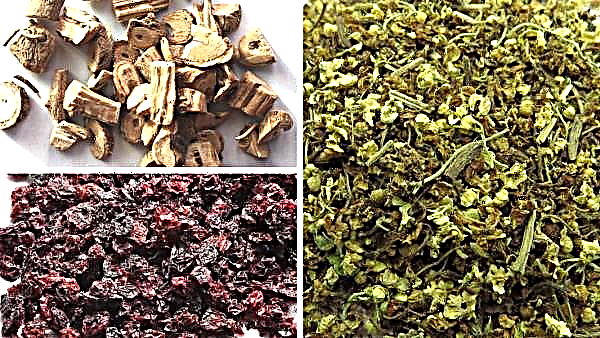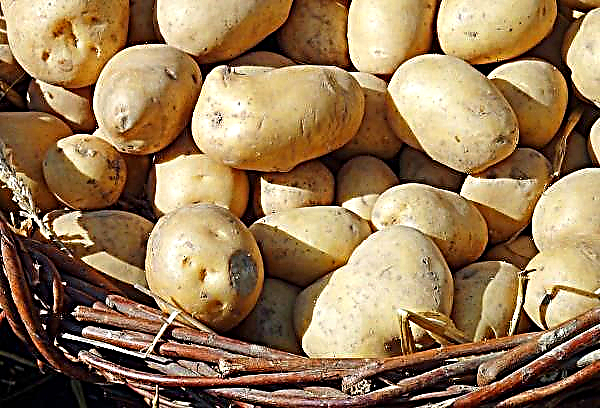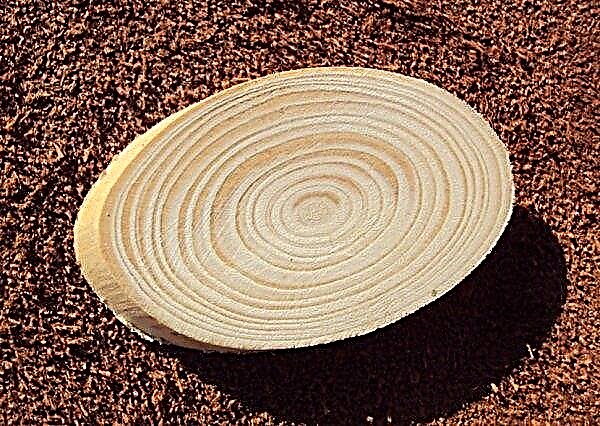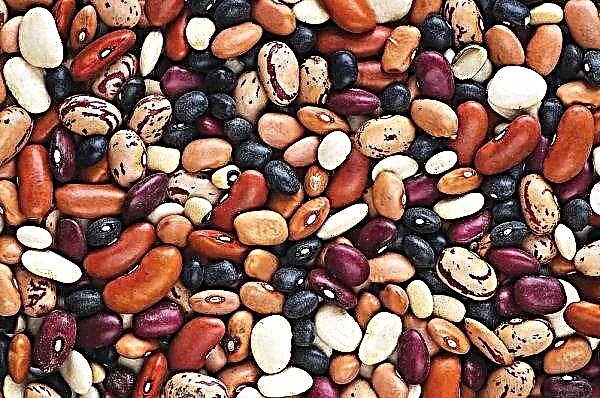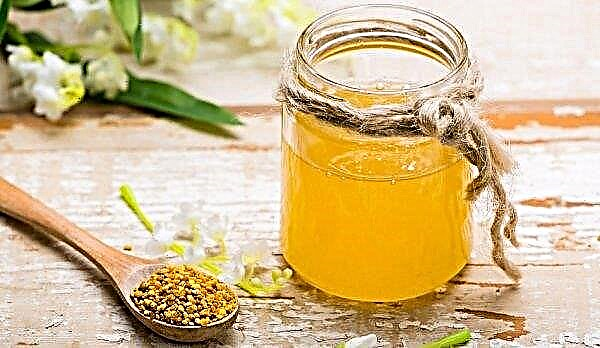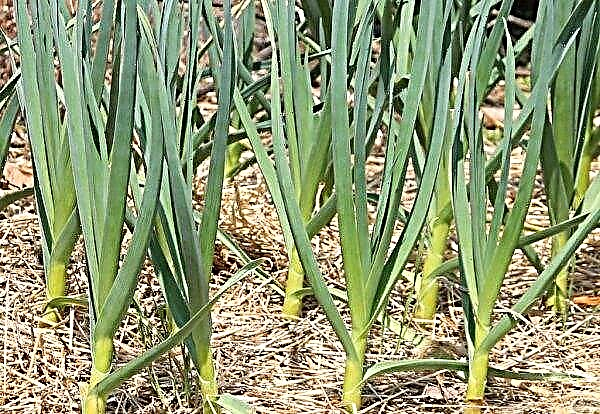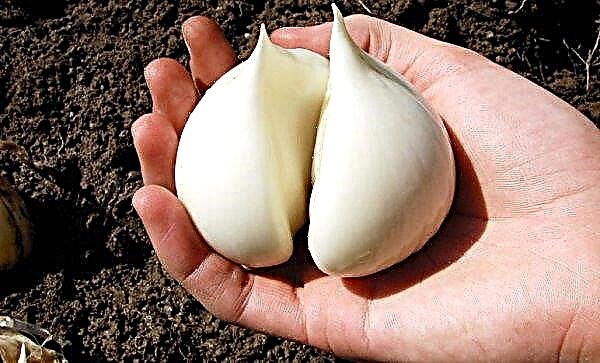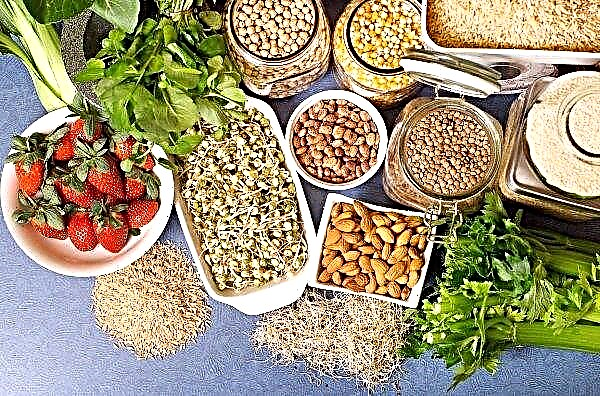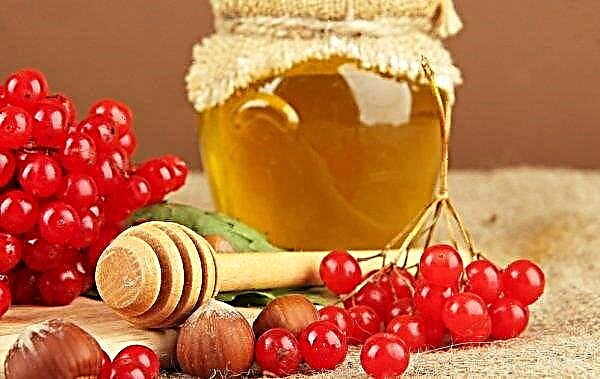Each gardener wants to make his plot unique. Fortunately, today there are many varieties of different colors that can decorate even the most problematic areas. They do not require good conditions and overwork. One of these varieties is Pink Quinn panicle hydrangea. About how this beauty looks, how to grow and use it in the landscape, will be discussed later.
Grade description
Hydrangea Pink Queen (Hydrangea paniculata Pink Queen) is a tall shrub that grows to 2.5 m. The stems are bright red, erect, strong, widely branched. On each shoot there are large ovate leaves with pointed ends. The color of the upper part of the leaf plate is green, matte, the petioles are red, which gives the shrub a great decorative effect.
Panicled species differs from others in that its inflorescences are collected in panicles. The Pink Queen variety blooms in large (30–35 cm) oval inflorescences with bisexual flowers. Sterile flowers with a diameter of 5-7 cm, have 4 sepals. The edges of the petals are wavy, town-like. The inflorescences are cream colored with a light green tint, which later changes to dark pink. Flowering lasts throughout July-October.
Important! Infertile flowers make up no more than 25% of the total number and are located on long pedicels.
Features of planting and care
In order to meet the Pink Queen variety description, you need to choose the right place for it.It is advisable to plant a bush in shaded areas, without drafts and strong winds. Then he will grow strong and beautiful. In open areas, the flower will grow poorly, and the inflorescence will be small.
Hydrangea loves fertile clay soil or loam. On an acidic substrate, flowering will be more abundant, and the color of the inflorescences more saturated. On sandy soil, the shrub will not develop well.
It is possible to increase acidity (pH not higher than 5.6) by introducing the following materials into the soil:
- half-ripe needles;
- brown peat;
- sawdust.
Important! You can not add lime, ash and dolomite flour to the soil. They reduce acidity.
Hydrangea is planted in early spring or autumn. The pit is prepared in advance. It should be up to 70–80 cm in diameter to evenly distribute the root system. Mineral, organic substances are added to the recess and watered.
The roots of the stalk are slightly shortened. During spring planting, annual shoots are shortened by 3-4 buds. When placing a seedling, do not deepen the root neck, it should be located at ground level. At the end, the bush is covered, compacted and well watered. Further care will consist of a standard set of work: top dressing, watering, cultivating, pruning, preparing for wintering and combating diseases and pests.
Fertilize the bush with mineral fertilizers in moderation, since voluminous inflorescences can break even a strong stem or bend the shoots.Mineral fertilizing alternate with organic:
- humus;
- bird droppings;
- slurry.

Fertilize the soil 4 times per season:
- In the spring, before the buds open, organics are used.
- In summer, during the budding period - for 1 m² take: a bucket of water, 35 g of ammonium nitrate, 20 g of superphosphate.
- In the middle of summer - fertilizers are used for hydrangeas (30 liters per bush).
- After flowering, 50 g of potassium salt and superphosphate are added to the soil. Stop making nitrogen-containing top dressing.

Hydrangea is a hygrophilous plant, therefore, the overdried soil does not tolerate. A young bush is watered daily in the morning or in the evening. When watering, they try so that the liquid does not fall on the flowers and greens. For an adult bush, whose height reached 1–1.5 m, the norm is 3 buckets of water on hot days.
Did you know? The scientific name of hydrangea "Hydrangea" in translation means "vessel with water", which indicates the plant's love of moisture.
In cooler, you can reduce the rate to 1 bucket. It is good if the water is settled and warm. So that when watering the root system is not exposed and the moisture lingers longer, lay mulch (peat, leaves, humus, dry sawdust).
Loosening is carried out every time after watering, so that the soil is not covered with a crust. Deep loosening of the earth should be at least three times per season. Loosen the soil to a depth of 5-10 cm. Another important procedure is pruning.
Did you know? Hydrangea got its beautiful name in honor of the sister of the Prince of the Roman Empire — Hydrangeas.
The first time pruned bushes at the age of 2-3 years. The primary procedure is performed in the spring when the kidneys are swollen. Before wintering, young stems are cut to 4 buds. Old, broken and diseased bushes are cut to the root (leave 6 cm from the ground). In the first year of flowering, buds need to be cut. This will help the bush gain strength and bloom profusely next year.
For the winter, you should prepare a bush. In the fall, all faded inflorescences and dry foliage are removed. Gradually reduce watering and finish it. For the winter, there is no need to feed the bush. If the growing region is characterized by harsh winters, you need to take care of shelter. The roots are covered with humus, manure and dry leaves. The upper part is covered with agrofibre or burlap.
In the cool and wet period, fungal diseases may appear. For prophylaxis, the bushes are sprayed with fungicidal preparations (“Fitosporin”, “Quadris”, “Topaz”, etc.). For the purpose of prevention, hydrangea is treated with copper sulphate, weeds are removed on time and fallen leaves are removed.
Care for the Queen Pink variety also provides for the prevention of pests. Hydrangea is sprayed with infusion of onion peel or garlic. If aphid appears, the plant is treated with Trichopolum or Actofit.
Hydrangea Pink Queen in the landscape
The panicled look of hydrangeas is very popular with landscape designers. They actively use this variety to decorate suburban areas.
Pink Quinn flower fits perfectly into any design style. It looks great both in single and in group landings. The red stalk of hydrangea and the bright green color of coniferous plants are very effectively combined.
Important! When decorating the garden, it should be remembered that the plant is growing rapidly, so you need to leave a border zone (at least 1 m).
In group plantings, it must be borne in mind that plants are selected according to similar needs for moisture, soil and lighting. Hydrangea is a hygrophilous plant and may not withstand neighborhoods with the same “moisture lovers”.
To maintain a moisture balance and give the bush a greater decorative effect, near hydrangea you can plant:
- azalea;
- asters
- barberry;
- dahlias;
- geranium;
- saxifrage;
- Lilies
- stonecrops;
- rhododendrons;
- roses;
- Spirea
- mocker.

There are many options for using Pink Queen hydrangea:
- hedge (goes well with lilacs);
- single landing;
- decoration of the banks of water bodies;
- multi-tier flower garden.
Hydrangea Pink Queen is well-known among landscape designers around the world. This bush is distinguished by unique decorative qualities and is an indispensable design element. In addition, the plant adapts perfectly to any terrain and requires minimal care.Did you know? Hydrangea is one of the plants that can accumulate aluminum in itself. It forms in itself compounds that give the flowers blue hues.

